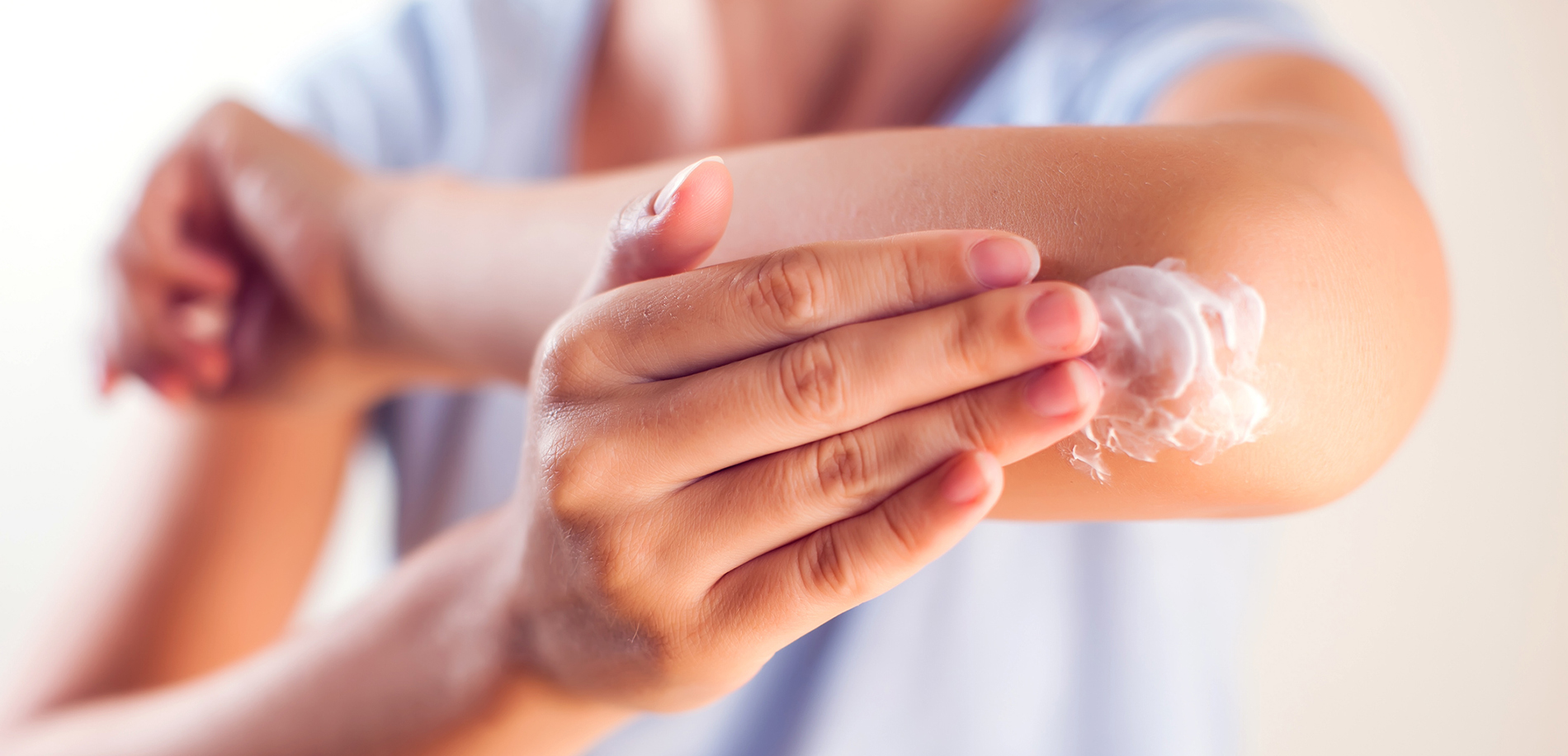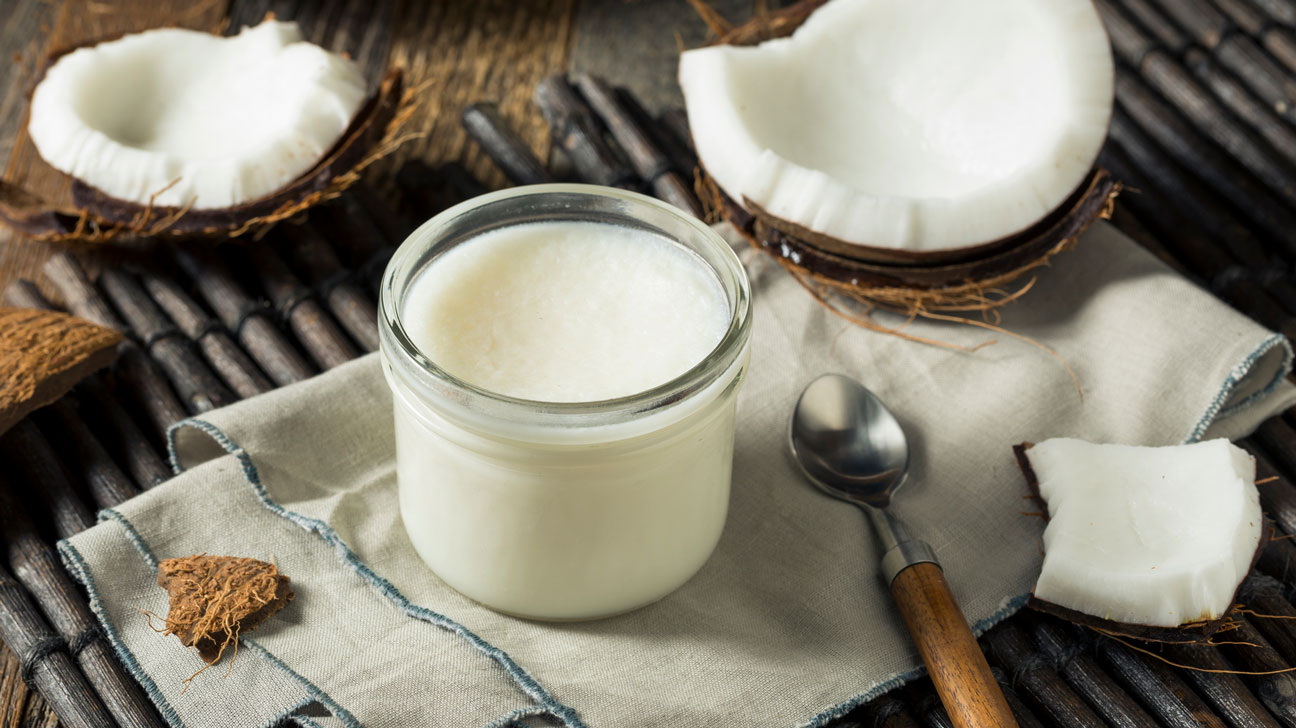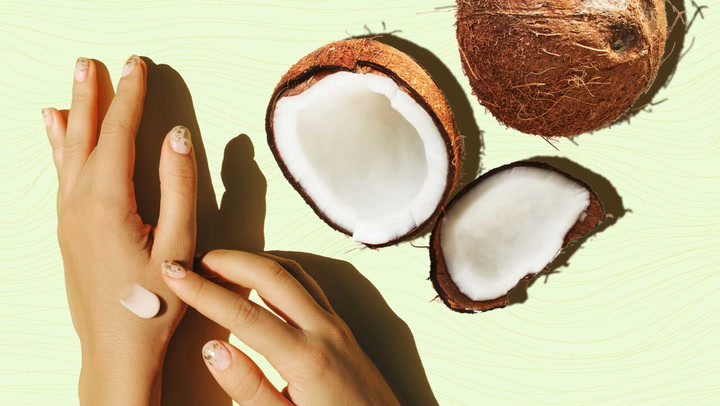
The Science Behind Pain Relief Creams
I’m going to kick things off by delving into the world of pain relief creams, but first, let’s understand the adversary we often grapple with: pain itself. Pain isn’t just an uncomfortable sensation; it’s a complex warning system. It alerts us to potential harm and kickstarts our body’s self-preservation tactics. But what happens when this helpful alert turns into a relentless alarm? That’s where pain relief creams step into the spotlight.
The popularity of these topical treatments isn’t just a matter of convenience. People are drawn to their ease of use and the promise of localized relief without systemic side effects. A pain relief cream might contain a variety of active ingredients, each with a specific role to play in the multimodal approach to pain management. These creams are designed to reduce inflammation, alleviate discomfort, or even distract the brain from pain signals.
Talking about active ingredients, that’s going to include options like NSAIDs, capsaicin, menthol, and lidocaine. Each of these components works differently to help lessen your discomfort. This isn’t just about slapping on any cream you find at the drugstore; it’s also about understanding what’s in it and how it works, which is exactly what we’re going to explore in the next section. I’m here to help you peek under the lid and decode the science behind those soothing creams.
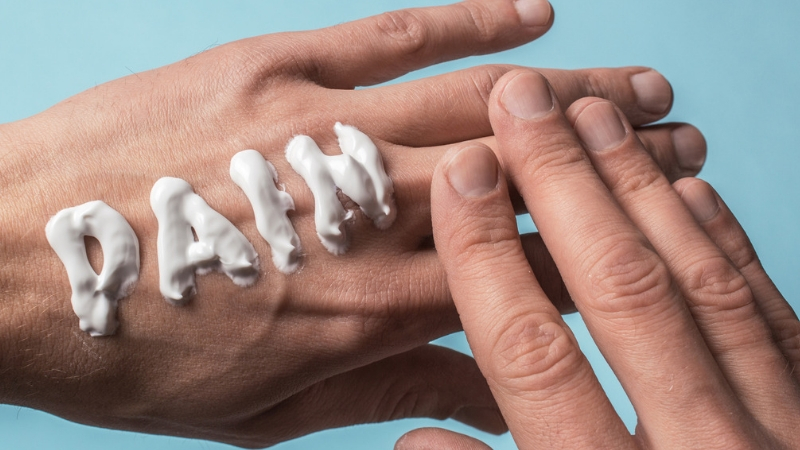
The Science of Soothing: Active Ingredients Explored
I’m going to break down the wall of mystery surrounding the active ingredients found in pain relief creams. This isn’t just about a list of substances; it’s about understanding what’s behind that cooling sensation or the heat you feel moments after applying the cream.
You’re going to find out about the common go-tos like menthol, which creates a cooling effect that distracts your body from the pain. Capsaicin, derived from chili peppers, brings heat and blocks pain signals. There are also anti-inflammatories like salicylates that reduce inflammation directly in the pained muscles or joints.
In my opinion, it’s crucial to understand how these ingredients interact with our bodies. For example, menthol works by triggering cold-sensitive receptors in the skin, which sends a ‘cooling’ signal that can override pain signals. Capsaicin, on the other hand, activates and then depletes substance P, a key neurotransmitter in conveying pain sensations to the brain.
Don’t worry too much about side effects – most topical creams are safe when used as directed. However, some can cause reactions, especially with prolonged or excessive use. Always check the label for the maximum recommended dosage and instructions.
This leads us to the lingering question: how effective are these active ingredients? That’s what you’re going to delve into next, where we’ll explore the scientific backing and real-world experiences that reveal the efficacy of pain relief creams.
How Effective Are Pain Relief Creams?
I’m going to walk you through what science says about the effectiveness of pain relief creams. It’s not just about marketing hype; there’s research that backs up the claims.
Clinical trials are the gold standard when we talk about efficacy. Several studies have supported that pain relief creams can indeed help manage symptoms like muscle soreness and arthritis pain. I’m here to help you understand those findings.
Next, let’s consider how these creams stack up against other forms of pain relief. It turns out, for some conditions, they’re as effective as oral medications, without some of the systemic side effects. That’s a big win for those who prefer a targeted approach.
Don’t just take my word for it; users often report that pain relief creams provide them with a much-needed respite from chronic pain. These anecdotes, alongside clinical evidence, add layers to our understanding of these products.
But here’s something to remember: your first attempt with a pain relief cream might not be a home run. It’s important to note that individual responses to pain relief creams can vary. Ingredients, concentration, and even the base formulation play a part in how well a cream works for you.
That said, let’s transition to how you can maximize the potential benefits of your pain relief cream. The application is key, and there are ways to get the most out of each tube.

Application Techniques for Maximum Benefit
I’m going to walk you through the best practices for applying pain relief creams so you can get the most out of these topical agents. It’s not just about slathering it on; there’s an art to it. You’ll want to ensure that the area is clean before application to avoid trapping any bacteria under the cream. Gently massaging the cream into the skin in a circular motion helps to improve circulation and may increase the effectiveness of the product.
Some areas of the body, like joints and muscles that are prone to strain, are where pain relief creams show their true potential. If you’re dealing with elbow tendinitis or a sore lower back, these creams can be particularly beneficial. However, there are places you should avoid, like broken skin, faces, and near the eyes, to prevent irritation.
Enhancing absorption is key. After applying the cream, you might want to cover the area with a cloth or bandage; this can keep the cream in place and enhance penetration. Just don’t wrap it too tight—that could cause other issues. And remember, you can always adjust your approach down the road based on what works for you.
Integrating Pain Relief Creams into Your Wellness Routine
It’s not just about slathering on a cream when discomfort strikes; it’s about incorporating topical treatments into a thoughtful wellness plan. This is where the real potential for relief lies. Your strategy will depend on the nature and cause of your pain, but using creams can be a simple and effective part of your daily routine.
In my opinion, timing is critical. Knowing when to apply pain relief creams in sync with other pain management strategies can make all the difference. For instance, using a cream right after a warm shower can improve pain relief as your pores are open and more receptive.
I’m here to help you with holistic strategies that can complement your use of topical pain treatments. Think about including low-impact exercises, like yoga or swimming, which help with circulation and flexibility. Don’t forget about the power of a good night’s rest or the role a balanced diet plays in overall health.
Choose something that resonates with you, something realistic that you can stick with. If you’re dealing with chronic pain, you might find that certain mindful practices, such as meditation or deep-breathing exercises, can significantly change how you perceive and manage your pain.
Remember, you can always adjust your approach down the road. It’s vital to listen to your body and be flexible as your needs change. But the fundamental goal remains: enhancing the quality of your life while managing discomfort with as much grace and ease as possible.
Now, let’s talk about what comes next. Navigating through the various pain relief options available on the market can be overwhelming. You’re going to find out more about how to choose the right pain relief cream that best fits your individual needs in the next section.

Choosing the Right Pain Relief Cream for You
I’m going to level with you: selecting the right pain relief cream can be a bit like walking through a maze. Now, with all the options out there, you might wonder where to start. I’m here to help you with that.
If you want to find a pain relief cream that works for you, consider the types of pain you’re dealing with. Is it muscular, joint, or nerve pain? Check the labels and select a product geared towards your specific pain type.
In my opinion, it’s vital to think about the active ingredients. Are you looking for something with a cooling effect? Then look for menthol or camphor. Need something with anti-inflammatory properties? Then diclofenac or ibuprofen might be in your lane.
You can always adjust your approach down the road, but start with recommendations from healthcare providers. They can point you towards prescription options if over-the-counter creams aren’t cutting it, ensuring a stronger, possibly more targeted solution.
Choose something that resonates with you. If you’re into natural remedies, there are creams with ingredients like arnica or turmeric. Meanwhile, if you have sensitive skin, opt for a formulation designed to be gentle and hypoallergenic.
Don’t worry too much about getting it perfect on the first try. Your body will respond to some products better than others, and it’s okay to switch things up if necessary. Just remember that above all, your comfort and safety are paramount.
I really hope that you find relief with the right pain relief cream. Remember, while these creams can offer solace, always consider the bigger picture of your health and consult professionals when needed. Your journey to a pain-free life is important, and you don’t have to walk it alone.
Please Visit me on KickStarter!
You can Also visit me at IndieGoGo!
[Disclaimer: Consult a healthcare professional before starting any new pain soothing regimen. “No Youchie” is not intended to diagnose, treat, cure, or prevent any disease illness or injury.]
Click here For Our Other Blog Post lists For Your Reading Pleasure!

Stearic Acid In No Youchie
make sure everything comes together just right! ? It might sound like a big, fancy word, but it’s actually a natural substance found in oils and fats. In No Youchie creams, stearic acid plays a crucial role in thickening and stabilizing the mixture, giving it that smooth and creamy texture you love. Without it, the cream might be too thin and runny, making it harder to use and less effective at soothing your aches and pains.
But stearic acid isn’t just about texture – it’s also a skincare superstar! ? It helps to lock in moisture, keeping your skin soft and hydrated. Plus, it forms a protective barrier, shielding your skin from dirt and other nasties. So when you apply your No Youchie cream, you’re not just getting relief from pain – you’re also giving your skin some extra TLC. ?️ It’s amazing how something as simple as stearic acid can make such a big difference in how your cream feels and performs. So next time you grab your No Youchie, take a moment to appreciate all the hard work that stearic acid does to keep you feeling great!
Introduction to Stearic Acid:
What Is Stearic Acid?
Stearic acid might sound like a complex term, but let’s break it down. ? Simply put, stearic acid is a type of fatty acid that’s found naturally in many different things we use every day. ? It’s like a tiny building block that helps make up the stuff around us, from the creamy texture in lotions to the smooth feel in some foods. You can even find it in things like soap and candles! But what’s really cool about stearic acid is how it works its magic, giving products that extra oomph.
Imagine stearic acid as a secret agent in your favorite moisturizer or lotion. ?️♂️ Its job? To make sure everything stays nice and smooth. You see, stearic acid has this superpower where it helps ingredients stick together, creating a luxurious texture that feels oh-so-good on your skin. It’s like a team player, making sure your lotion spreads evenly and leaves your skin feeling soft and moisturized. So, the next time you slather on some lotion, remember to thank stearic acid for its behind-the-scenes work!
But stearic acid isn’t just about making things feel nice. Nope, it’s got some serious benefits too! ? Think of it like a little helper in your skincare routine, keeping your skin feeling happy and healthy. Stearic acid can help lock in moisture, keeping your skin hydrated throughout the day. Plus, it’s gentle enough for most skin types, so you can trust it to do its job without causing any fuss. So, whether you’re smoothing on some lotion or washing up with your favorite soap, stearic acid is there to make sure your skin stays feeling fabulous!
Sources of Stearic Acid:
Stearic acid, ? a type of saturated fatty acid, can be found in various natural sources ?. One common source is animal fats, like beef, pork, and poultry ???. When you enjoy a juicy steak or crispy bacon, you’re also getting a dose of stearic acid! Additionally, stearic acid can be found in some dairy products ? like cheese and butter. So, next time you spread butter on your toast or sprinkle cheese on your pizza, remember that you’re also getting a little bit of stearic acid.
Plants ? are another rich source of stearic acid. Many vegetable oils, such as cocoa butter and shea butter, contain significant amounts of stearic acid. So, when you bake cookies ? or make chocolate treats ?, you’re using ingredients that are packed with this special fatty acid. Besides, stearic acid can also be found in some nuts and seeds ?. So, when you snack on almonds or sprinkle chia seeds on your yogurt, you’re giving your body some stearic acid goodness!
Lastly, stearic acid is even produced naturally by our own bodies! ? That’s right, our bodies have amazing abilities to create stearic acid as needed. It plays important roles in our body’s functions, such as providing energy ? and maintaining healthy skin ????. So, whether we get it from the foods we eat or our own bodies make it, stearic acid is a vital part of keeping us healthy and strong. So, next time you see a juicy steak or spread some butter on your toast, remember the power of stearic acid!
Importance of Stearic Acid in Various Industries:
Stearic acid might sound like a big, fancy term, but it’s actually quite important in many everyday things! ? One of its key roles is in making soap ?. Yep, that’s right! When stearic acid teams up with other ingredients, it helps create the bubbly, cleansing goodness we use to wash our hands and bodies. So, the next time you lather up with soap, thank stearic acid for keeping you squeaky clean!
But wait, there’s more! Stearic acid also plays a crucial role in the cosmetics industry ?. It’s often used in lotions, creams, and makeup products to give them a smooth, creamy texture. So, whether you’re moisturizing your skin or adding a pop of color to your lips, stearic acid is there to help make it happen! ? Plus, stearic acid can be found in candles ?️ too! It helps candles burn evenly and last longer, so you can enjoy their warm glow for hours on end.
Let’s not forget about the food industry! ? Stearic acid is often used in food production as a food additive. It helps stabilize and thicken many of the foods we enjoy, like ice cream ?, chocolate ?, and even some types of bread ?. So, whether you’re indulging in a sweet treat or enjoying a sandwich, stearic acid is quietly working behind the scenes to make your food taste and feel just right. So, next time you encounter soap, makeup, candles, or even your favorite snack, give a little nod to stearic acid for its versatile contributions!
Chemical Properties of Stearic Acid:
Molecular Structure of Stearic Acid:
Stearic acid is like the Lego of the chemical world! ? It’s made up of tiny building blocks called molecules, and its molecular structure is super interesting. Picture a long, twisty line with lots of carbon and hydrogen atoms holding hands ?. These atoms are all bonded together in a chain, and stearic acid has a special shape because of how these atoms arrange themselves. It’s like a snake slithering through the grass ?, but instead of scales, it’s made of carbon and hydrogen atoms.
Now, let’s zoom in a bit closer. Each carbon atom in stearic acid has two hydrogen atoms snuggled up next to it, except for the ends of the chain, where there’s only one hydrogen atom. It’s like a big carbon-hydrogen sandwich ?! This arrangement makes stearic acid behave in certain ways. For example, it doesn’t like to mix with water because water molecules aren’t really into the whole carbon-hydrogen party. But it’s best friends with other fats and oils because they’re all made of similar building blocks.
But wait, there’s more! Stearic acid isn’t just a lone ranger. It’s often found hanging out with other molecules, forming teams called triglycerides. These teams are what make up the fats we find in our food and in our bodies. So next time you see stearic acid listed on a food label, remember it’s like a tiny Lego piece in the big puzzle of fats and oils! ?
Chemical Properties of Stearic Acid:
Physical Characteristics of Stearic Acid:
Stearic acid, known as the “strong and stable” component in many skincare products, plays a vital role in shaping their physical characteristics. Imagine it as the architect behind the scenes, designing the texture and consistency of your favorite creams and lotions. ?️ It’s like the glue that holds everything together, ensuring that your skincare goodies don’t separate into a gloopy mess. ?
Now, let’s talk about its physical characteristics! Stearic acid is a solid, waxy substance at room temperature, a bit like a candle that’s not yet lit. ?️ It’s what gives your creams that luxurious, creamy feel when you apply them, making them glide smoothly over your skin. ? And here’s the cool part: Stearic acid is what scientists call “hydrophobic,” which means it repels water. So, when you slather on your moisturizer, it forms a protective barrier on your skin, locking in moisture and keeping it hydrated. ?
But wait, there’s more! Stearic acid isn’t just about texture; it also has some skincare benefits. ? It can help replenish your skin’s natural oils, keeping it soft and supple. Plus, it has anti-inflammatory properties that can soothe irritated skin and calm redness. So, next time you reach for your favorite lotion, take a moment to appreciate the superhero-like qualities of stearic acid, silently working behind the scenes to keep your skin happy and healthy. ?♀️?♂️
Stearic Acid Chemical Reactions and Properties:
Stearic acid is like a superhero in the world of chemistry! It’s a fatty acid that can do lots of cool things in reactions ?♂️. When stearic acid meets a strong base, like sodium hydroxide, it holds hands with it and makes soap! This process is called saponification, and it’s what turns oils and fats into soap. So, the next time you’re washing your hands with soap, remember that stearic acid might be one of the ingredients helping you get clean!
But that’s not all stearic acid can do. It’s also buddies with metals like magnesium. When stearic acid hangs out with magnesium, they team up to make something called magnesium stearate. This stuff is super slippery, like when you put oil on a slide! Magnesium stearate helps keep things from sticking together, which is why you might find it in medicine capsules or even your favorite candies ?. So, stearic acid isn’t just for making soap; it’s also a key player in keeping things smooth and easy.
Now, let’s talk about stearic acid’s shape! It’s like a long chain with lots of carbon atoms holding hands with hydrogen atoms. This shape makes stearic acid not very friendly with water. It’s like oil and water – they don’t mix! That’s why stearic acid is called hydrophobic, which means it repels water. But stearic acid loves hanging out with other fats and oils, which is why it’s such a big deal in making soap and other fun stuff. So, next time you see stearic acid listed in the ingredients, you’ll know it’s there to help keep things smooth and squeaky clean! ?
Chemical Reactions and Properties of Stearic Acid:
Stearic acid is a special kind of chemical that can do some cool stuff! It’s like a superhero for soap and candles! ?♂️ When stearic acid meets with another chemical, they do a dance called a chemical reaction. This dance changes both of them! ? Sometimes, stearic acid can team up with other chemicals to make soap. It’s like teamwork! ? The soap you use to wash your hands has stearic acid in it. It helps the soap get all bubbly and clean your hands really well! ?
Now, let’s talk about the properties of stearic acid. Properties are like the superpowers of stearic acid. ? One of its superpowers is that it’s solid at room temperature. That means it’s like a solid block instead of being all runny like water. ?️ Another cool thing about stearic acid is that it can melt when it gets hot. Imagine it’s like ice turning into water when you leave it in the sun! ☀️ But stearic acid doesn’t turn into water; it just gets all gooey and melts like butter! ?
Stearic acid is like a magician with many tricks up its sleeve! ? It can change colors, smells, and even turn into different things! Sometimes, stearic acid can become a part of candles. ?️ It helps the candle burn slowly and keeps it from melting too fast. So, next time you light a candle or wash your hands, remember the superhero powers of stearic acid! ?
Role of Stearic Acid in Skincare:
Benefits of Stearic Acid for Skin Health:
Stearic acid isn’t just for making soap and candles; it’s also a friend to your skin! ? This amazing chemical has some superpowers that can help keep your skin happy and healthy. One of its benefits is that it acts like a shield, protecting your skin from losing too much water. ? This means your skin stays hydrated and soft, like a fluffy cloud! ☁️ Stearic acid also helps other good stuff, like vitamins and antioxidants, sink deep into your skin, making it stronger and more radiant! ✨ So, next time you see stearic acid on a lotion or cream, know that it’s there to give your skin a big hug!
Another cool thing about stearic acid is that it’s gentle on your skin, even if you have sensitive skin like a delicate flower ?. Unlike some other chemicals, stearic acid won’t cause irritation or redness. It’s like a calm sea, soothing and comforting your skin with every touch. ? Plus, stearic acid can help balance the oils on your skin, keeping it from getting too oily or too dry. It’s like having a wise friend who knows just what your skin needs!
Stearic acid is like a skincare superhero, fighting off dryness and irritation to keep your skin looking its best! ? With its moisturizing and soothing powers, it’s no wonder why it’s a popular ingredient in many skincare products. So, whether you’re putting on lotion before bed or applying sunscreen before heading out, remember to thank stearic acid for giving your skin the love and care it deserves! ❤️
Common Uses in Skincare Products For Stearic Acid:
Stearic acid isn’t just a fancy word; it’s actually a helpful ingredient in many skincare products! ? You might find it listed on the back of your favorite lotion, cream, or even sunscreen. But what does it do? Well, stearic acid is like a little helper that makes these products work better! ?️ One of its jobs is to make sure the product feels smooth and creamy when you put it on your skin. It’s like the magic wand that turns a potion into a silky potion! ✨
Another way stearic acid helps in skincare products is by keeping them stable. ? It’s like the glue that holds everything together, making sure all the good stuff in your lotion or cream stays mixed up nicely. This means that every time you use your skincare product, you’re getting the right amount of all the ingredients that make your skin happy! ? Plus, stearic acid can also help your skin absorb other ingredients better, like vitamins and antioxidants. It’s like opening the door for all the good stuff to come in and work its magic! ?
Stearic acid is like a behind-the-scenes hero in skincare products, making sure everything runs smoothly and your skin gets all the love it needs! ❤️ Whether it’s keeping the product feeling nice and creamy or helping your skin absorb all the good stuff, stearic acid plays an important role in keeping your skin healthy and happy. So, next time you use your favorite lotion or cream, take a moment to thank stearic acid for all its hard work! ?
Potential Side Effects or Allergies of Stearic Acid:
While stearic acid is usually a helpful ingredient in skincare products, like lotion and cream, it’s important to know that it might not agree with everyone’s skin. Just like some foods can cause allergies, stearic acid can sometimes cause reactions in some people. ? These reactions can vary from person to person and might include things like redness, itching, or irritation. It’s like when you try a new food and find out it doesn’t agree with your tummy!
Some people with sensitive skin might be more likely to have a reaction to stearic acid. ? If you notice any signs of irritation or discomfort after using a product that contains stearic acid, it’s a good idea to stop using it and talk to a dermatologist. They can help figure out if stearic acid is the culprit or if it’s something else causing the reaction. It’s always better to be safe than sorry when it comes to taking care of your skin! ?
While stearic acid is generally safe for most people, it’s important to be aware of the potential for side effects or allergies. By paying attention to how your skin reacts to products containing stearic acid, you can help keep your skin happy and healthy. And if you do experience any issues, don’t hesitate to seek advice from a skincare professional. Your skin deserves all the love and care in the world! ❤️
Stearic Acid in Cosmetics and Personal Care Products:
Functions of Stearic Acid in Cosmetics:
Stearic acid might sound like a big word, but it’s actually a helpful ingredient in many cosmetics, like makeup and skincare products! ? Its main job is to make sure the products feel nice and smooth when you put them on your skin. It’s like the chef in the kitchen, making sure everything is mixed up just right to create a perfect dish! ? Stearic acid helps give cosmetics that creamy texture that feels so good when you apply them. So, whether you’re putting on foundation or lipstick, you can thank stearic acid for making it feel amazing! ?
But that’s not all stearic acid does in cosmetics! It also helps keep the products stable, kind of like a guardian watching over them. ?️ This means that your favorite makeup or skincare product stays the same even after sitting on the shelf for a while. Stearic acid helps prevent the ingredients from separating or going bad, so you can trust that your cosmetics will always be ready when you need them! ⏳ Plus, stearic acid can help cosmetics last longer on your skin, so you can stay looking fabulous all day long! ?
Stearic acid is like a secret ingredient that makes cosmetics even better! ? Whether it’s giving them that smooth texture you love or keeping them stable on the shelf, stearic acid plays an important role in making sure your makeup and skincare products work their magic. So, the next time you reach for your favorite lipstick or moisturizer, remember to thank stearic acid for helping you look and feel your best! ?
Types of Products That Contain Stearic Acid:
Stearic acid is like a versatile ingredient that can be found in many different products that we use every day! ?️ One common type of product that contains stearic acid is skincare items, like lotions, creams, and moisturizers. ? Stearic acid helps these products feel smooth and creamy when you apply them to your skin, making them easier to spread and more enjoyable to use. So, the next time you put on lotion after a shower, you can bet stearic acid is in there, working its magic to keep your skin soft and hydrated! ?
Another type of product that often includes stearic acid is soap. ? Whether it’s bar soap, liquid soap, or even fancy handmade soap, stearic acid plays a key role in making sure the soap cleans your skin effectively. It helps create that rich lather we all love, making it easier to wash away dirt and grime. ? So, every time you scrub your hands clean or take a relaxing bubble bath, you can thank stearic acid for helping the soap do its job!
Stearic acid isn’t just for skincare products and soap; it’s also found in makeup items, like foundation, lipstick, and eyeshadow. ? In cosmetics, stearic acid helps give these products a smooth texture and helps them stay stable on your skin. It’s like the magic ingredient that keeps your makeup looking flawless all day long! ✨ So, whether you’re getting ready for a special occasion or just adding a pop of color to your everyday look, stearic acid is there to help you feel beautiful inside and out! ?
Regulatory Considerations and Safety For Stearic Acid:
When it comes to using stearic acid in products we use on our skin, safety is super important! ? That’s why there are regulations in place to make sure that products containing stearic acid are safe for us to use. ?️ Regulatory agencies, like the FDA (Food and Drug Administration), carefully review the use of stearic acid in cosmetics and skincare products to ensure they meet certain standards. They make sure that the amount of stearic acid used is safe and won’t cause harm to our skin or overall health. So, you can feel confident knowing that the products you use are being looked after by these watchdogs!
But safety doesn’t stop there! ? Cosmetic companies also have their own teams of experts who test their products to make sure they’re safe for us to use. These tests help identify any potential risks or side effects that could come from using products containing stearic acid. ? Companies take these safety measures seriously because they want to make sure their products are not only effective but also gentle and safe for everyone to use. So, before you slather on that lotion or apply that lipstick, know that a lot of care and attention has gone into making sure it’s safe for you to use!
In addition to regulatory agencies and cosmetic companies, it’s also important for us as consumers to be aware of safety considerations when using products containing stearic acid. ? It’s a good idea to read the labels and ingredient lists carefully, especially if you have allergies or sensitive skin. If you’re unsure about a product or have any concerns, don’t hesitate to ask a healthcare professional or dermatologist for advice. By staying informed and being cautious, we can all enjoy the benefits of stearic acid in our skincare and cosmetic products safely and confidently! ?

Dietary Sources and Health Effects of Stearic Acid.
Foods Rich in Stearic Acid.
Stearic acid isn’t only in skincare products; it’s also in some foods we eat! ? Meat, like beef and pork, is one type of food packed with stearic acid. ? So, when you savor a juicy steak or a tender pork chop, you’re also getting a bit of stearic acid with your protein. It’s like a surprise gift in your meal! ? But don’t fret, stearic acid in meat is just a small part of a balanced diet, and enjoying meat in moderation can be part of a healthy lifestyle.
Dark chocolate is another source of stearic acid. ? That’s right – chocolate! Dark chocolate has cocoa butter, which is naturally rich in stearic acid. So, when you treat yourself to dark chocolate, you’re not just enjoying something sweet; you’re also getting a bit of stearic acid! It’s like a yummy snack with a bonus health boost! ? But remember, like any treat, enjoy it in moderation as part of a balanced diet.
Nuts like almonds and peanuts are packed with stearic acid. ? Whether you’re munching on almonds or spreading peanut butter on toast, you’re getting a dose of stearic acid. It’s like nature’s way of saying, “Here’s a snack that’s good for your skin too!” ? So, when you’re feeling peckish, grab a handful of nuts for some stearic acid and all the other good stuff they offer! ?
Stearic Acid Impact on Cholesterol Levels.
Stearic acid might sound fancy, but it’s just a type of fat found in food. ? When it comes to cholesterol, stearic acid is like the neighbor who never causes trouble! Studies show it doesn’t raise “bad” LDL cholesterol like other fats do. ? Instead, it keeps things neutral, not making cholesterol levels go up or down much. So, when you munch on stearic acid foods, you can relax knowing your cholesterol is probably fine. ?
But wait, there’s more! Some studies even say stearic acid could be good for your cholesterol levels. ? It’s like a superhero, lowering the “bad” LDL cholesterol and boosting the “good” HDL kind. That’s a big win for your heart! ❤️ So, when you munch on stearic acid-packed foods like meat and dark chocolate, it’s not just about tasty treats; you’re also treating your heart right. ? It’s all about picking foods that make you feel good inside and out!
Of course, balance is super important, as with anything. While stearic acid might not mess with your cholesterol levels, it’s still smart to enjoy it as part of a balanced diet. ? Eating a mix of foods and keeping an eye on portion sizes can help you keep your cholesterol levels in check and your heart feeling good. ?️ So, dig into those stearic acid-rich foods, but don’t forget to balance them out with lots of fruits, veggies, and whole grains for a diet that’s awesome for your taste buds and your heart! ?
Health Benefits and Risks of Stearic Acid Dietary Intake.
Stearic acid is in lots of foods we eat, and it has good and not-so-good sides for our health. ?️ One good thing is that stearic acid is a type of fat that doesn’t seem to raise “bad” cholesterol, which can clog up our arteries and cause heart issues. ? Actually, some studies say stearic acid might even lower “bad” LDL cholesterol and boost “good” HDL cholesterol. ❤️ So, when we munch on foods like meat, dark chocolate, and nuts, we’re not just treating ourselves; we’re also helping our hearts stay healthy!
Just like with anything we eat, it’s best to enjoy stearic acid in moderation. ? Having too much could mean taking in too many calories, which might lead to gaining weight and other health troubles. ? Also, some folks might not feel great after eating foods with stearic acid, especially if they have allergies or sensitivities. It’s smart to notice how our bodies react to stearic acid foods and talk to a doctor if we’re worried. By keeping a balanced diet and watching how much stearic acid and other fats we eat, we can keep ourselves healthy and feeling good. ?
Stearic acid can be both good and not-so-good for us when we eat it. ? It’s a fat that doesn’t seem to mess with our cholesterol levels and might even help our hearts stay healthy. But, like with everything, it’s best to have foods with stearic acid in moderation and pay attention to how our bodies feel to avoid any possible reactions. By being careful with what we eat and how much, we can get the good stuff from stearic acid while keeping ourselves healthy and feeling good. ?
Industrial Applications of Stearic Acid.
Use in Candle Making of Stearic Acid.
Stearic acid is super important for making candles just right! ?️ When it’s mixed with candle wax, it makes the wax harder and able to withstand higher temperatures without melting too fast. This is really handy for candles that need to stay solid when it’s warm outside or if you’re using them outdoors. ? Plus, stearic acid helps candles burn evenly and smoothly by preventing them from dripping or slumping as they melt.
Stearic acid adds a special touch to how candles look! ✨ When it’s mixed into the wax, it gives candles a shiny finish and makes them more solid-looking. This makes the candles not just useful, but also really pretty to look at. ?️ Plus, candle makers can use stearic acid to change how the wax feels and acts, so they can make all kinds of candles, from big ones to small ones, with different textures.
Stearic acid is like a magic touch in candle making! ✨ It helps candles stay strong, burn just right, and look beautiful. ?️ Candle makers use it to tweak the wax so their candles meet all the quality standards and look exactly how they want them to. ?
Role in Plastic and Rubber Industries of Stearic Acid.
Stearic acid is a big deal in both the plastic and rubber industries! ? It’s like a helpful friend that keeps things running smoothly. ?️ In plastics, stearic acid acts as a lubricant and mold release agent, making the manufacturing process easier. ? When it’s mixed in with plastic, it reduces friction, so the plastic flows better and is easier to work with. ? Plus, it helps keep the plastic strong by protecting it from damage caused by heat, light, or oxygen. ?
Stearic acid is like a helper in the rubber industry too! ?♂️ It makes mixing and processing rubber easier by smoothing things out. ? Plus, it stops the rubber from sticking to molds and machines when it’s being shaped. ?️ This means less hassle and longer-lasting equipment, saving time and money!
Stearic acid is like a secret ingredient in making plastic and rubber stuff! ?♂️ It helps things run smoothly when they’re being made and keeps them strong and lasting longer. ? So, whenever you see plastic or rubber items, remember that stearic acid might have had a part in making them awesome!
Stearic acid is like a superhero in cleaning products! ?♂️ It helps water get rid of dirt and grease better by making it spread out more. That’s why it’s in laundry soap and dishwashing liquid. ? And guess what? It’s also great at making bubbles, so it makes your cleaning stuff foam up nicely, making it even better at cleaning!
Other Industrial Uses For Stearic Acid and Manufacturing Processes.
Stearic acid helps clothes feel super soft and comfy! ? It’s like a magic potion that coats the fibers in fabric softeners, making them less scratchy and nicer to touch. This makes clothes feel smoother and look better, which makes people like them even more. Plus, in making clothes, it helps machines run smoothly by reducing friction, like oil in a car engine.
Stearic acid does cool stuff in medicine and makeup! ? It’s like glue in tablets, holding all the ingredients together and making them into solid pills. It also makes sure the pills don’t stick to machines during making. In makeup, it helps mix things together and make creams, lotions, and makeup thicker and smoother. It’s like magic for making products feel nice on your skin!
Stearic acid is super important in many industries and helps make products work better and look good! ? It’s used in lots of things like cleaning stuff, clothes, medicines, and makeup because it’s so handy and has special qualities that make things better.
Stearic Acid in Pharmaceutical Products.
Pharmaceutical Formulations Containing Stearic Acid.
Stearic acid is often found in medicines because it has special qualities that help make the medicine and its final form. ? One big job it has in medicines is being an “excipient” in tablets. As an excipient, stearic acid works as a lubricant. This means it stops the ingredients in tablets from sticking to the equipment when they’re being made. This helps make sure the tablets are smooth and made well every time.
Stearic acid does two important things when making tablets. ? First, it works like glue, keeping all the ingredients together so the tablet stays sturdy and doesn’t break apart. This makes it easier for us to handle and swallow. ? Second, it can also fill up extra space in the tablet without affecting how the medicine works. This lets companies make tablets in various sizes and weights to match the correct dose of medicine.
Stearic acid can change how fast tablets dissolve in the body, which affects how quickly we absorb the medicine. ? It helps control this process, making sure the medicine works well and is absorbed in a steady way. Overall, stearic acid is super important in making medicine tablets, helping them work properly and stay strong. ? Its many jobs make it really useful in keeping medicine tablets high-quality, stable, and effective.
Stearic Acid’s Role as an Excipient or Binder.
Stearic acid is like a helper in making medicine tablets. ? It’s a lubricant, which means it stops the ingredients from sticking to the machines used in making tablets. This helps make the tablets smoothly and without any problems, so we get good-quality tablets every time. ?️ Also, stearic acid helps reduce rubbing between the tablet bits and the machines, so the tablets don’t get any cracks or chips.
Stearic acid also acts like glue in tablets, keeping all the ingredients stuck together. ? This helps the tablet keep its shape and stay strong, making it easier to take. It’s especially handy for tablets with lots of different ingredients or ones that need to be squeezed really hard during making. Stearic acid makes sure the tablet stays solid and doesn’t fall apart, even after sitting on the shelf for a while.
Stearic acid has a big job in medicines—it helps tablets dissolve at the right speed, so the body can absorb the medicine properly. ? This way, the medicine works predictably every time. It’s like a behind-the-scenes helper, making sure tablets do their job well. ?
Safety Considerations About Stearic Acid in Drug Manufacturing.
When making medicines, it’s essential to think about whether stearic acid might cause allergies in some people. ? Although most folks are okay with it, some might have reactions. Drug companies need to check this risk and put warnings on medicine labels if needed. They might also create other versions of meds for people who are allergic to stearic acid. This way, they make sure everyone stays safe and healthy. ?
Also, stearic acid is used in medicines to help hold them together. ? But, it can affect how fast the medicine dissolves and how much of it gets into your body. By designing meds carefully, drug companies can make sure stearic acid doesn’t mess up how well the medicine works. They study how stearic acid moves around in the body to make sure meds with it work like they’re supposed to. By getting the formula and dose just right, drug makers make sure meds with stearic acid do their job safely and reliably. ?
Pharmaceutical makers use tough quality checks during the whole process to make sure meds with stearic acid are safe and work well. ?️ They test raw stuff, watch how things are going, and check the final product to make sure it follows rules and standards. By following Good Manufacturing Practices (GMP), drug companies keep up super high quality and safety. They keep an eye on things all the time and try to make them even better, making meds with stearic acid super safe and reliable. ?

Environmental Impact of Stearic Acid.
Biodegradability and Environmental Fate Of Stearic Acid.
Let’s talk about how stearic acid is kind to our planet! ? Did you know it’s an eco-friendly superstar? When stearic acid goes into the environment, like when we wash off our skincare goodies, it naturally breaks down over time. ? This process, called biodegradability, means bacteria and tiny organisms can turn stearic acid into simpler stuff that’s harmless. ? So, when we use stuff with stearic acid, we’re helping keep our planet cleaner and greener!
Let’s chat about where stearic acid goes after we’re done with it. Once it’s rinsed away, stearic acid heads to wastewater treatment plants. ? There, special processes break it down more, so it doesn’t mess up our rivers and oceans. ? After treatment, stearic acid might even become biogas, which is like a renewable energy snack. ? So, stearic acid isn’t just eco-friendly—it’s also a part of making sustainable energy!
Stearic acid might seem like a regular ingredient in our skincare stuff, but it’s actually a planet-saving hero! ? It breaks down naturally, so it doesn’t stick around in the environment for too long. Plus, when it goes through wastewater plants, it can even help make renewable energy. ? So, when you use something with stearic acid, you’re not just looking after your skin—you’re also helping out the Earth. ?
Potential Ecotoxicological Effects Of Stearic Acid.
Let’s check out how stearic acid can affect nature and animals. While it’s safe for people, scientists are still looking into how it might impact other creatures. ? Some studies say if there’s lots of stearic acid in water, it could hurt fish and plants living there. ?? This could mess up how these creatures live and make the water not so healthy. But we need more studies to know for sure how much it can affect them.
Let’s talk about how stearic acid is made and how it affects nature. ?? Some ways to make it might use chemicals or a lot of energy, which can make air and water dirty. ♻️? But if we use ways that are better for the environment and manage waste properly, we can make stearic acid without hurting nature so much. This shows how important it is to use eco-friendly ways for everything to do with stearic acid, from making it to getting rid of it. ??
Let’s think about how stearic acid might affect nature even though it’s usually safe for us. ?? We need to do more research and use better ways to make and use it to keep our planet healthy for the kids of tomorrow. ?? We gotta make sure we enjoy the good things about stearic acid without upsetting nature’s balance. ?? Let’s keep learning and finding ways to use stearic acid safely for both us and our planet! ??
Sustainable Sourcing and Production Practices Of Stearic Acid.
Let’s make stearic acid in a greener way by using stuff that comes from nature and keeps coming back! ? Instead of using things like petroleum, we can use oils from plants that grow again and again, like trees and other plants. ? This helps us use up less of the Earth’s limited stuff and makes less bad stuff in the air that makes our planet hotter. ♻️? Also, it’s important for companies to get their materials from farmers who take good care of the land and treat workers fairly. This helps keep nature and people safe and happy! ??? Let’s choose nature-friendly ways to make stearic acid and keep our planet healthy for everyone! ??
Using eco-friendly ways to make stearic acid is super important for keeping our planet healthy! ?? Technologies like green chemistry and making processes better can help use less energy, make less trash, and release fewer bad stuff into the air and water. ?? We can also use energy-saving machines, recycle water and other stuff, and find smart ways to deal with waste. By making sure every step of making stearic acid is Earth-friendly, from where we get the materials to how we make it, we can make sure stearic acid helps our planet instead of hurting it. ??? Let’s make stearic acid in a way that’s good for the Earth and good for all of us who live here! ??
Making stearic acid while being kind to the Earth is super important! ?? We can do this by using things like plants for stearic acid instead of stuff that runs out like oil. ? Also, using eco-friendly ways to make it, like using less energy and making less waste, is a big help. ♻️? And when everyone works together, we can make stearic acid in a way that keeps the Earth happy for today and tomorrow! ?? Let’s team up for a greener, better future for stearic acid and all the good stuff it’s used for! ??
Stearic Acid and Soap Making.
Role of Stearic Acid in Soap Formulation.
Stearic acid is a superstar in soap formulation, playing a vital role in creating those bubbly, cleansing bars we love. ? As a saturated fatty acid, stearic acid brings stability and structure to soap recipes. It acts as a hardening agent, helping the soap bar hold its shape and durability over time. ? This means your soap won’t turn into a mushy mess after a few uses, thanks to stearic acid’s contribution.
Moreover, stearic acid enhances the lathering and cleansing properties of soap, giving you that satisfying foamy experience in the shower. ? When combined with other oils and ingredients, stearic acid creates a luxurious, creamy lather that effectively lifts dirt and grime from your skin. Its emollient properties also leave your skin feeling soft and moisturized after each wash. So, not only does stearic acid make your soap sturdy and long-lasting, but it also ensures a delightful bathing experience every time. ?
In addition to its functional benefits, stearic acid adds aesthetic appeal to soap formulations. ? It contributes to the opacity and texture of the soap, giving it a smooth, creamy appearance. By adjusting the amount of stearic acid in a recipe, soap makers can customize the hardness, lather, and appearance of their creations to suit their preferences and the needs of their customers. So, whether you prefer a rich, creamy bar or a bubbly, exfoliating scrub, stearic acid plays a key role in crafting the perfect soap for your bathing routine. ?
Effects on Soap Texture and Lathering Properties of Stearic Acid.
When it comes to soap, texture and lather are everything, and stearic acid knows just how to make them shine! ? This versatile fatty acid has a significant impact on the texture of soap, giving it that smooth, creamy feel we all love. By adding stearic acid to soap formulations, soap makers can create bars with a luxurious, velvety texture that glides effortlessly across the skin. ? Additionally, stearic acid plays a crucial role in enhancing the lathering properties of soap. It helps to create a rich, abundant lather that envelops your skin in a blanket of cleansing bubbles, leaving you feeling refreshed and rejuvenated after each wash. ?
But the magic of stearic acid doesn’t stop there! ? It also contributes to the stability and longevity of the lather, ensuring that it lasts throughout your entire bathing experience. This means you can enjoy a consistently luxurious lather from the first use to the last, without any compromise in quality. ? Stearic acid’s ability to create a long-lasting, indulgent lather sets it apart as a must-have ingredient in soap formulations, elevating your daily bathing routine to a spa-like experience. ? So, next time you reach for your favorite bar of soap, take a moment to appreciate the role of stearic acid in creating that perfect balance of texture and lather. ?
Moreover, stearic acid’s influence on soap texture and lathering properties extends beyond mere aesthetics. ? It also enhances the cleansing efficacy of soap, ensuring that it effectively removes dirt, oil, and impurities from the skin without stripping away its natural moisture. This means you can enjoy a thorough yet gentle cleanse with every use, leaving your skin feeling clean, refreshed, and nourished. ? Whether you prefer a rich, creamy lather or a light, fluffy foam, stearic acid allows soap makers to tailor their formulations to meet the diverse needs and preferences of consumers. ? So, whether you’re washing away the stresses of the day or indulging in a moment of self-care, stearic acid ensures that your soap delivers a luxurious and satisfying bathing experience every time. ?
Tips for DIY Soap Makers with Stearic Acid.
For DIY soap makers diving into the world of stearic acid, there are a few tips and tricks to ensure success and satisfaction with your creations! ? First and foremost, it’s essential to understand the role of stearic acid in soap formulations. As a fatty acid, stearic acid contributes to the hardness and texture of soap, so incorporating it into your recipes can help achieve that perfect balance of firmness and smoothness. ? When adding stearic acid to your soap, be sure to melt it gently and thoroughly mix it with your other ingredients to ensure even distribution throughout the batch. This will help avoid any clumps or uneven texture in your finished product.
Another crucial tip for DIY soap makers working with stearic acid is to experiment with different concentrations to find the ideal balance for your desired soap characteristics. ? While stearic acid can enhance the hardness and lather of soap, using too much can result in a bar that feels waxy or sticky. On the other hand, using too little may not achieve the desired firmness or texture. ? Start with small amounts and gradually increase or decrease the quantity based on your preferences and feedback from testing. Remember, the beauty of DIY soap making is in the experimentation and customization!
Lastly, don’t forget to have fun and get creative with your soap-making journey! ? Incorporate your favorite scents, colors, and additives to personalize your creations and make them truly unique. Whether you’re crafting artisanal bars for yourself or thoughtful gifts for loved ones, let your imagination run wild and enjoy the process every step of the way. ? And if you encounter any challenges or setbacks along the road, don’t be discouraged—learning and growing is all part of the adventure! With these tips in mind, you’ll be well on your way to mastering the art of DIY soap making with stearic acid. ?
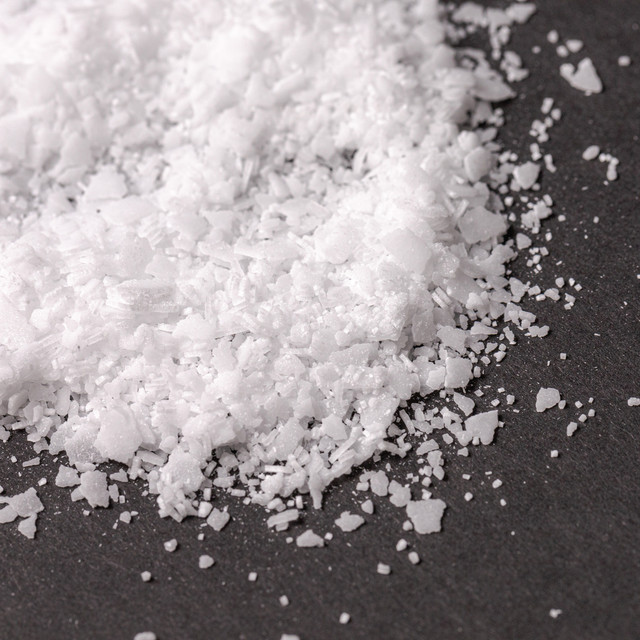
Future Trends and Research in Stearic Acid.
Emerging Uses and Applications For Stearic Acid.
As our understanding of stearic acid expands, so do its potential uses and applications across various industries! ? One emerging area where stearic acid is making waves is in the field of renewable energy. Researchers are exploring its potential as a sustainable feedstock for biofuel production, offering a greener alternative to traditional fossil fuels. ? By converting stearic acid into biodiesel or other biofuels, we can reduce our reliance on finite resources and mitigate the environmental impact of transportation and energy generation. This innovative approach holds promise for a more sustainable future powered by stearic acid!
Another exciting frontier for stearic acid is in the realm of nanotechnology, where it’s being investigated for its role in advanced materials and coatings. ? Scientists are exploring its use as a building block for nanostructures with unique properties, such as improved strength, conductivity, and thermal stability. These nanostructures could revolutionize industries ranging from electronics and aerospace to healthcare and environmental remediation. ? By harnessing the power of stearic acid at the nanoscale, we’re unlocking endless possibilities for groundbreaking technologies and solutions.
Furthermore, stearic acid is finding new applications in the realm of personal care and cosmetics, where demand for natural and sustainable ingredients is on the rise. ? Its moisturizing and emulsifying properties make it a valuable addition to skincare formulations, offering nourishment and hydration to the skin. Additionally, stearic acid’s ability to stabilize and thicken formulations makes it a versatile ingredient in creams, lotions, and makeup products. ? As consumers become more conscious of the ingredients they use on their bodies, stearic acid presents an eco-friendly option that delivers both efficacy and peace of mind. With these emerging uses and applications, stearic acid continues to prove its versatility and potential to shape the future of innovation and sustainability.
Ongoing Research on Health and Environmental Effects of Stearic Acid.
Research into the health and environmental effects of stearic acid is ongoing, aiming to unravel its complexities and implications. ? On the health front, scientists are delving deeper into how stearic acid impacts cholesterol levels and overall cardiovascular health. While some studies suggest that stearic acid may have a neutral or even beneficial effect on cholesterol, others explore its potential interactions with different dietary factors and genetic predispositions. ? Understanding these nuances can help refine dietary recommendations and inform public health initiatives aimed at reducing the risk of heart disease and other related conditions.
Simultaneously, environmental researchers are investigating the ecological footprint of stearic acid and its derivatives. ? Studies focus on its biodegradability in various environmental compartments, such as soil, water, and sediments, shedding light on its fate and behavior once released into the environment. Additionally, scientists examine the potential impacts of stearic acid on aquatic ecosystems and terrestrial organisms, assessing its toxicity and bioaccumulation potential. ? This research informs regulatory agencies, policymakers, and industries about the environmental risks associated with stearic acid and aids in the development of sustainable management practices.
Furthermore, ongoing studies explore innovative ways to mitigate any adverse effects of stearic acid while maximizing its benefits. ?️ This includes exploring alternative production methods that minimize waste and energy consumption, as well as developing eco-friendly formulations and applications in various industries. Additionally, interdisciplinary research efforts aim to uncover synergies between stearic acid and other compounds, harnessing their combined potential for improved health outcomes and environmental sustainability. ? By fostering collaboration across scientific disciplines and stakeholders, ongoing research endeavors aim to unlock the full potential of stearic acid while safeguarding human health and the planet for future generations.
Potential Innovations and Developments in Stearic Acid Technology.
Exciting innovations and developments are on the horizon for stearic acid technology, promising to revolutionize its applications and benefits across various industries. ? One area of focus is the exploration of novel production methods that enhance efficiency, reduce environmental impact, and increase product purity. Researchers are investigating advanced techniques such as enzymatic catalysis and biotechnological approaches to streamline stearic acid production while minimizing waste and energy consumption. ♻️ These innovative methods not only improve the sustainability of stearic acid manufacturing but also pave the way for the development of high-quality, eco-friendly products.
Moreover, advancements in stearic acid technology are driving its integration into cutting-edge materials and formulations with enhanced performance and functionality. ? In the cosmetics and personal care sector, for instance, researchers are exploring the incorporation of stearic acid into innovative skincare formulations that offer superior moisturization, protection, and anti-aging properties. ? Similarly, in the pharmaceutical industry, stearic acid is being utilized in novel drug delivery systems and formulations to improve drug stability, bioavailability, and therapeutic efficacy. These developments open up new possibilities for stearic acid to address evolving consumer needs and market demands while pushing the boundaries of technological innovation.
Furthermore, emerging trends in stearic acid technology are driving its adoption in sustainable and renewable applications, aligning with global efforts towards environmental conservation and circular economy principles. ? Researchers and industry players are exploring stearic acid’s potential as a renewable resource for bio-based materials, biodegradable plastics, and green chemicals. By leveraging stearic acid derived from renewable feedstocks such as plant oils, bio-waste, and algae, innovative solutions are being developed to reduce reliance on fossil fuels and minimize carbon emissions. ? These advancements not only contribute to mitigating climate change but also create new opportunities for sustainable economic growth and development, ushering in a brighter and greener future powered by stearic acid technology.
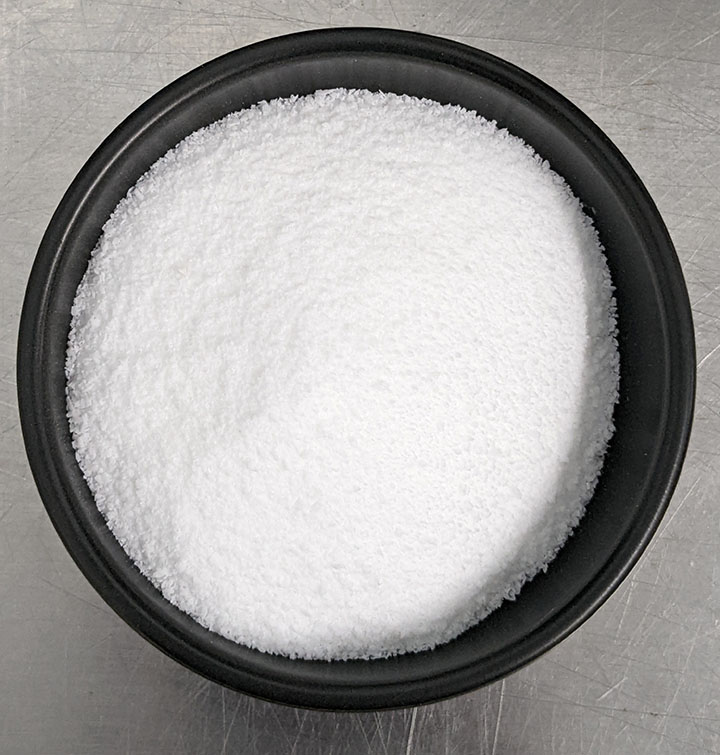
Conclusion.
Stearic acid plays a pivotal role in “No Youchie,” contributing to its unique texture, stability, and overall effectiveness. ? As a key ingredient in the formulation, stearic acid acts as an emulsifier and thickening agent, ensuring proper cohesion of the product’s components. This helps to create a smooth and creamy consistency that spreads easily on the skin, providing a soothing and protective barrier against irritation and discomfort. Additionally, stearic acid enhances the stability of “No Youchie,” preventing it from separating or becoming gritty over time, thus maintaining its efficacy and user satisfaction.
Furthermore, stearic acid’s emollient properties make it an ideal choice for “No Youchie,” offering moisturizing benefits that help to keep the skin hydrated and supple. ? By forming a protective layer on the skin’s surface, stearic acid helps to lock in moisture, preventing transepidermal water loss and maintaining the skin’s natural moisture balance. This not only soothes existing irritation but also promotes the healing process, allowing the skin to recover more quickly from minor cuts, scrapes, and abrasions. As a result, “No Youchie” provides users with reliable relief from discomfort while supporting the skin’s overall health and well-being.
Moreover, stearic acid’s compatibility with other ingredients in “No Youchie” enhances the product’s versatility and effectiveness in addressing a wide range of skin concerns. ? Whether used for soothing sunburns, calming insect bites, or alleviating dryness and chafing, “No Youchie” harnesses the multifunctional properties of stearic acid to deliver targeted relief where it’s needed most. This makes “No Youchie” a must-have solution for anyone seeking fast and effective relief from everyday skin irritations, making stearic acid a true hero ingredient in this beloved product.
Our YouTube channel Gym Rat Tips!
Check Out Our I Fund women Campaign!
Check out Our Social Media Accounts!
[Disclaimer: Consult a healthcare professional before starting any new pain soothing regimen. “No Youchie” is not intended to diagnose, treat, cure, or prevent any disease illness or injury.]
Pain Relief Solution Is No Youchie!

Understanding The Role Of Menthol In Pain Relief Creams
I’m going to guide you through the world of menthol, particularly its role in pain relief creams. Menthol is an organic compound, famously known for its refreshing scent and cooling sensation. It’s widespread in nature, predominantly found in the oils of mint plants, such as peppermint and spearmint.
This isn’t just about the pleasurable cool feel of menthol; our ancestors used it long before it found its way into our modern medicine cabinets. Over history, menthol has been utilized in traditional remedies across various cultures due to its soothing properties.
You’re going to find out about how this age-old remedy made its transition to being a staple in today’s topical analgesics. These are products that alleviate aches and pains right at the source. Now, menthol is a key player in many over-the-counter pain relief creams, gels, and ointments, valued for both its effectiveness and natural origin.
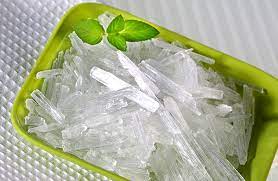
Scientific Mechanisms: How Menthol Alleviates Pain
In this part of the conversation, we’re getting into the nitty-gritty of how menthol works its magic on pain. It’s not just an old wives’ tale that menthol soothes your aches; there’s bona fide science behind it. So, let’s break down these mechanisms.
Menthol doesn’t work in a vacuum; it teams up with your body’s nervous system. When menthol is applied to the skin, it stimulates the thermoreceptors, which are essentially cold-sensitive nerve endings. Think of it as a gentle knock on the door that tells your brain, ‘Hey, something’s cooling down here.’ This signal can distract your brain from pain by essentially hijacking the attention, offering you a moment of ‘Ahh, that’s better.’
However, it’s not all about distraction. Menthol acts as a counterirritant. That means it creates a new, milder irritation that masks the original pain. Your brain gets busy dealing with the fresh (but non-harmful) sensation caused by the menthol, giving you a break from the discomfort you were previously feeling.
Next up, we’re moving into whether all this translates to effectiveness in the real world. Is menthol really the hero we paint it to be in pain relief? Do studies support its use? In the upcoming section, I’m going to lay out the research-backed evidence that gives credence to the role of menthol in managing pain. Hang tight, as we dive into evaluating the actual results of menthol-based creams.
Evaluating the Effectiveness of Menthol-Based Creams
When it comes to menthol-based creams, you’re going to find out about their real-world impact on pain relief through scientific studies and comparative analyses with other pain relief agents. Many people ask if menthol is actually effective, or if it’s just a temporary buzz of cold sensation that distracts from the pain.
Research tells us that the effectiveness of menthol isn’t just anecdotal. Studies have consistently shown that menthol, when applied topically, can significantly alleviate minor muscular and joint pain. This isn’t just about a short-lived cooling effect; it’s also about the physiological changes that result in pain relief.
To give you an idea, one report in the Journal of Clinical Rheumatology found that participants using menthol reported a marked decrease in perceived muscle strain and discomfort. Further, when menthol is stacked against other over-the-counter options like non-steroidal anti-inflammatory drugs (NSAIDs), the results are often comparable, particularly for acute pain scenarios such as strains or sprains.
But what do real users say? Beyond the labs, testimonials reveal a high degree of satisfaction with the pain relief afforded by menthol creams. Many users point out the rapid onset of relief, which can be particularly reassuring in moments of sudden ache or pain. Choose something that resonates with you; if a cooling sensation plus pain relief sound appealing, menthol could be your go-to.
That being said, this isn’t a cure-all. While menthol-based creams can be very effective, they’re part of a pain management toolkit, which may include other forms of therapy. And that’s going to include understanding how to apply these creams properly, which leads us into our next section.
Applying Menthol Creams: Best Practices and Safety
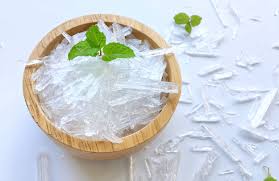
When using menthol creams, it’s important to follow a few guidelines to ensure you’re getting the most out of the product safely.
Start by reading the label and following the manufacturer’s instructions. Over-the-counter should include details on how often you can apply the cream and how much to use.
If you’re new to menthol creams, do a patch test first. Apply a small amount to a discreet area of skin, wait a bit, and keep an eye out for any irritation.
Regarding concentration, less can be more. Start with creams that have a lower percentage of menthol and see how your body reacts. If you need more intense relief, you can try a stronger formulation, but always incrementally.
Avoid using menthol creams on broken or irritated skin, or with heat sources like a heating pad, as this can increase the risk of burns.
Be aware of possible side effects like redness, irritation, or an allergic reaction and consult your healthcare provider if you experience these.
A quick word on storing your cream: Keep it away from extreme temperatures and out of direct sunlight to maintain its efficacy.
After applying, wash your hands unless you’re treating them. Menthol can cause a burning sensation if it gets into your eyes or on other sensitive areas.
Beyond Pain Relief: Additional Benefits and Uses of Menthol
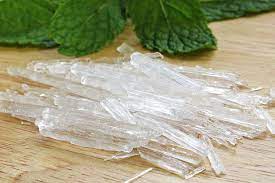
You’re going to find out about more than just pain alleviation when you pry into the world of menthol. It’s not only your muscles that get a break; the cooling sensation of menthol creams can also play a significant part in promoting relaxation and reducing stress. Imagine applying a dab after a long day and feeling a wave of calm spread through your body—that’s menthol at work.
In my opinion, menthol doesn’t get enough credit. There’s a lot of opportunity in exploring its other medical applications. For instance, menthol has been used to help ease congestion in the chest and throat. It’s an ingredient in vapor rubs and lozenges for a good reason.
But that’s not the end of the story. Menthol also serves therapeutic purposes beyond pain and cold relief. Did you know that it’s found in certain cosmetics and perfumery products? Its refreshing properties make it a fine choice for personal care items.
Choose something that resonates with you when it comes to incorporating menthol into your health and wellness routine. Whether it’s a cream, a patch, or aromatherapy oils, the versatility of menthol means you can tailor its soothing touch to your needs.
So my question to you today is, how will you embrace the multifaceted nature of menthol? As you can always adjust your approach down the road, don’t worry too much about perfecting your choice on the first go. The journey towards well-being is continuous, and menthol can very well be a part of your personal remedy repertoire.
Please Visit me on KickStarter!
You can Also visit me at IndieGoGo!
[Disclaimer: Consult a healthcare professional before starting any new pain soothing regimen. “No Youchie” is not intended to diagnose, treat, cure, or prevent any disease illness or injury.]
Click here For Our Other Blog Post lists For Your Reading Pleasure!

Vegetable Glycerin in No Youchie
Introduction:
Hey folks! Let’s talk about something awesome: No Youchie pain creams extra special! ? These creams are like magic potions for your achy muscles and joints, and what’s really cool about them is that they’re made with natural ingredients. ? That means they’re gentle on your skin and safe for you to use, even if you’re a grown-up.
So, what’s the big deal with natural ingredients? ? Well, instead of using chemicals that are hard to pronounce, No Youchie creams use things like plants and oils that come from nature. ? That way, they’re kind to your skin and don’t have any weird stuff in them. Plus, they smell really crazy, like flowers getting ate by a bear on a sunny day. ☀️
If you’ve ever felt sore after a long day of work or a tough workout, No Youchie pain cream might be just what you need! ?✨ It’s like giving your muscles a little bit of extra love and care. And because it’s made with natural ingredients, you can feel good about using it on yourself or sharing it with your family. ? Give it a try and see how much better you can feel!
What is Vegetable Glycerin?
Let’s talk about vegetable glycerin! ? Vegetable glycerin is a special ingredient that’s used in lots of different products, like skincare items and even some foods. But what exactly is it? Well, think of it like a super friendly moisturizer for your skin. ? It’s made from plants, like coconut or soybeans, and it helps keep your skin feeling soft and smooth.
Now, you might be wondering, “How does vegetable glycerin work?” ? It’s actually pretty cool! Vegetable glycerin is what’s called a humectant, which means it attracts water. That’s why it’s so good at keeping your skin hydrated – it draws moisture from the air and locks it into your skin, like a big drink of water for your thirsty skin cells. ?
But here’s the really neat part: vegetable glycerin isn’t just good for your skin – it’s also good for your hair and nails too! ?♀️ It helps keep them strong and healthy by locking in moisture and preventing them from getting dry and brittle. So, the next time you see vegetable glycerin on the ingredients list of your favorite skincare product, you’ll know it’s there to help keep you looking and feeling your best!

Define vegetable glycerin and its origins as a natural byproduct of vegetable oil extraction.
Let’s dive into the world of vegetable glycerin! ? First things first, what exactly is vegetable glycerin? Well, it’s a special liquid that’s kind of like a superhero for your skin. ? It’s made from plants, like coconuts or soybeans, and it’s used in lots of different products, like skincare items and even some foods. You can think of it as a super friendly moisturizer that helps keep your skin feeling soft and smooth.
Now, here’s where it gets interesting: vegetable glycerin is actually a natural byproduct of making vegetable oils. ? When oils are extracted from plants, like squeezing juice from an orange, vegetable glycerin is left behind. It’s like a bonus gift from Mother Nature! Instead of letting it go to waste, people figured out that vegetable glycerin has all these amazing benefits for your skin and other parts of your body, so they started using it in all sorts of products.
So, the next time you see vegetable glycerin listed on the label of your favorite lotion or shampoo, you’ll know exactly what it is and where it comes from. ? It’s a natural, plant-based ingredient that’s been around for a long time, quietly doing its job to keep your skin happy and healthy. And now, you’re in on the secret too!
Role of Vegetable Glycerin in No Youchie Pain Creams:
Let’s talk about the role of vegetable glycerin in No Youchie Pain Creams! ? Vegetable glycerin is like a secret ingredient that makes these creams extra special. It’s kind of like a superhero for your skin – it helps keep it feeling soft and hydrated. ? When you rub No Youchie Pain Cream onto your achy muscles or joints, the vegetable glycerin gets to work, making sure your skin gets all the moisture it needs to feel better.
But here’s the really cool part: vegetable glycerin doesn’t just hydrate your skin – it also helps the other ingredients in No Youchie Pain Creams work better too! ? It’s like a team player that makes sure everyone does their job properly. So, when you’re using No Youchie Pain Cream, you can thank vegetable glycerin for helping make it so effective at soothing your aches and pains.
And here’s one more thing to know about vegetable glycerin: it’s all-natural and super safe to use! ? That means you can feel good about putting it on your skin, knowing that it’s gentle and won’t cause any harm. So, the next time you reach for your No Youchie Pain Cream, remember to thank vegetable glycerin for being such an awesome ingredient! ?

Moisturizing Properties:
Let’s talk about how vegetable glycerin works its magic in No Youchie Pain Creams to keep your skin hydrated and soft! ? When you rub No Youchie onto your skin, the vegetable glycerin gets to work, kind of like a sponge that soaks up water. ? It pulls moisture from the air and locks it into your skin, so it feels nice and hydrated all day long.
But that’s not all – vegetable glycerin also helps create a protective barrier on the surface of your skin, like a cozy blanket. ? This barrier helps trap moisture in and keeps your skin from getting dry and flaky. So, even if you spend all day running around or playing outside, your skin stays soft and smooth.
And here’s the best part: because vegetable glycerin is all-natural, you don’t have to worry about any yucky chemicals or stuff that’s bad for your skin. ? It’s like giving your skin a big hug and saying, “I’ve got you covered!” So, the next time you reach for your No Youchie Pain Cream, remember to thank vegetable glycerin for keeping your skin feeling happy and healthy! ?
Skin Barrier Function:
Let’s chat about how vegetable glycerin in No Youchie Pain Creams helps to keep your skin strong and protected! ? When you rub No Youchie onto your skin, the vegetable glycerin goes to work to create a special shield, kind of like armor. ?️ This shield helps keep bad stuff, like dirt and germs, from getting into your skin and causing irritation.
But here’s the really cool part: vegetable glycerin doesn’t just keep the bad stuff out – it also helps your skin stay hydrated and healthy from the inside! ? It works like a team player, making sure your skin has everything it needs to stay strong and happy, even when you’re out exploring or playing sports.
And here’s one more thing to know: because vegetable glycerin is all-natural, you can feel good about putting it on your skin. ? It’s like giving your skin a big high-five and saying, “You’re doing great!” So, the next time you reach for your No Youchie Pain Cream, remember to thank vegetable glycerin for being such an awesome protector! ?
Non-Comedogenic Nature:
Let’s talk about why vegetable glycerin in No Youchie Pain Creams is great for all skin types! ? You see, vegetable glycerin is what we call “non-comedogenic,” which is a fancy way of saying it doesn’t clog pores. ? That means it’s super gentle and won’t cause any breakouts or make your skin feel greasy, no matter what type of skin you have.
So, whether your skin is oily, dry, or somewhere in between, you can feel confident using No Youchie Pain Cream knowing that the vegetable glycerin won’t cause any problems. ? It’s like having a friend who always has your back and knows exactly what your skin needs to stay happy and healthy.
And here’s the best part: because vegetable glycerin is all-natural, you can trust that it’s safe and gentle for your skin. ? It’s like giving your skin a big hug and saying, “I’ve got you covered!” So, the next time you reach for your No Youchie Pain Cream, remember to thank vegetable glycerin for being such an awesome ingredient that’s suitable for everyone! ?
Humectant Properties makes No Youchie pain creams extra special:
Let’s explore how vegetable glycerin in No Youchie Pain Creams keeps your skin feeling hydrated and happy! ? You see, vegetable glycerin has a special talent called “humectant properties,” which basically means it’s like a magnet for moisture. ? When you rub No Youchie onto your skin, the vegetable glycerin attracts moisture from the air and pulls it into your skin, kind of like a sponge soaking up water.
But here’s the really cool part: vegetable glycerin doesn’t just attract moisture – it also locks it into your skin, so it stays hydrated for longer periods of time. ? That means you don’t have to keep reapplying No Youchie throughout the day – just one application and you should be good to go! It’s like giving your skin a big drink of water that lasts all day long.
And here’s one more thing to know: because vegetable glycerin is all-natural, you can trust that it’s safe and gentle for your skin. ? It’s like having a friend who always knows exactly what your skin needs to stay happy and healthy. So, the next time you reach for your No Youchie Pain Cream, remember to thank vegetable glycerin for helping keep your skin hydrated and feeling great! ?

Soothing Effect:
Imagine sinking into a warm bath after a long, tiring day ?. That feeling of relaxation is like the soothing effect found in pain relief creams. When you apply these creams to your skin, it’s like giving yourself a comforting hug ?. They contain special ingredients like Aloe Vera and Lavender Oil that work together to calm your skin and ease your discomfort. Just like a gentle breeze on a hot day, these creams provide relief that feels cool and refreshing. It’s like magic ✨, but without the wands and spells.
Think of the soothing effect as a gentle lullaby ? for your body. It’s like a cozy blanket wrapping around you, making you feel safe and snug. The menthol and camphor in the cream create a cooling sensation that’s like dipping your toes into a cold stream on a hot summer day. And just like a warm hug from a friend, these creams make your muscles feel relaxed and at ease ?♀️. So, whether you’ve been running around all day or just need a little pick-me-up, these creams are here to make you feel like you’re floating on a cloud ☁️.
In a world where everything moves so fast, it’s important to take a moment to slow down and take care of yourself. The soothing effect of these pain relief creams is like hitting the pause button on a hectic day. It’s like a gentle whisper ? that says, “It’s okay to take a break and give yourself some love.” With each application, you’re giving yourself the gift of relaxation and comfort. So, the next time you’re feeling a little achy or stressed, reach for one of these creams and let the soothing magic ✨ do its work. Your body will thank you for it!
Compatibility with Natural Ingredients:
No Youchie believes in using ingredients from nature ? to create their pain relief creams, and vegetable glycerin fits perfectly into this philosophy. Imagine a garden full of fresh fruits and vegetables ?, each one bursting with natural goodness. That’s what vegetable glycerin brings to the table! It’s made from plant oils and is known for its moisturizing properties, like a big drink of water ? for your skin. No harsh chemicals here, just pure, natural goodness that’s gentle on your body.
When you see vegetable glycerin on the label of a No Youchie pain cream, you can trust that it’s there to make your skin happy ?. It’s like inviting a friendly garden gnome into your skincare routine! This ingredient works hand in hand with other natural wonders like Aloe Vera and Lavender Oil to create a formula that’s as gentle as a butterfly’s kiss ?. No need to worry about harsh side effects or irritating chemicals – just smooth, soothing relief that’s as natural as a sunny day ?.
No Youchie’s commitment to using natural ingredients isn’t just about being trendy – it’s about caring for your skin and your body. With vegetable glycerin in the mix, you can feel confident knowing that you’re giving your skin the best of Mother Nature’s bounty. So, the next time you reach for a No Youchie pain cream, remember that it’s more than just a product – it’s a testament to the power of nature ? to heal and comfort.
Conclusion No Youchie pain creams are extra special:
Vegetable glycerin is like the secret ingredient that makes No Youchie pain creams extra special! ? It’s not just any old ingredient – it’s the key to unlocking soothing relief for all kinds of aches and pains. Whether you’ve got a sore muscle from a tough workout ? or a nagging ache that just won’t go away, vegetable glycerin is here to save the day! It’s like a gentle hug for your skin, wrapping you in comfort and easing your discomfort with every application.
When you choose a No Youchie pain cream, you’re not just choosing any old remedy – you’re choosing a formula that’s been carefully crafted to provide the best possible relief. And at the heart of that formula is vegetable glycerin, working its magic to calm inflammation, hydrate your skin, and banish pain like a brave knight on a quest ?️. So whether you’re dealing with arthritis, back pain, or just a pesky headache, you can trust that No Youchie pain creams have got your back – and your knees, and your shoulders, and everywhere in between!
In the grand scheme of things, vegetable glycerin might seem like a small detail, but its impact on No Youchie pain creams is anything but minor. It’s the glue that holds everything together, ensuring that each batch of cream is as effective and soothing as the last. So the next time you reach for a No Youchie pain cream, take a moment to appreciate the power of vegetable glycerin – and all the natural wonders that make it possible for you to feel your best, every day. ?
Please Visit me on KickStarter!
You can Also visit me at IndieGoGo!
[Disclaimer: Consult a healthcare professional before starting any new pain soothing regimen. “No Youchie” is not intended to diagnose, treat, cure, or prevent any disease illness or injury.]
Click here For Our Other Blog Post lists For Your Reading Pleasure!
Germall Plus No Youchie Pain Cream:
Exploring Germall Plus: The Key to Safe and Effective Preservation in No Youchie Pain Cream
Introduction:
In the world of skincare, keeping products safe and effective is super important. Preservatives are like the hidden heroes, quietly protecting skincare products from germs and making sure they stay good over time. Among these protectors, Germall Plus is a top choice known for its ability to fight off lots of different germs and work well in different types of skincare products. As more people care about product safety, it’s crucial for both companies and customers to know how important preservatives like Germall Plus are.
Germall Plus serves as a linchpin in the formulation of No Youchie Pain Cream, providing multifaceted benefits that underpin its efficacy and safety. By effectively inhibiting microbial growth, Germall Plus helps preserve the integrity of the cream, safeguarding it against contamination and degradation. This not only extends the shelf life of the product but also ensures that consumers can trust in its potency and reliability, even after prolonged storage. Moreover, Germall Plus contributes to the overall quality of No Youchie Pain Cream, reflecting the brand’s commitment to excellence and customer satisfaction.
But, even though Germall Plus is great, it’s essential to use it carefully and follow the rules. Safety is super important, so it’s crucial to make sure Germall Plus is used in the right amounts and works well with other ingredients. Companies also need to follow strict rules and guidelines to make sure their products are safe and consistent every time. By making sure Germall Plus is both effective and safe, it becomes a vital part of keeping No Youchie Pain Cream top-notch, showing that the brand cares about making safe, effective, and high-quality skincare products.
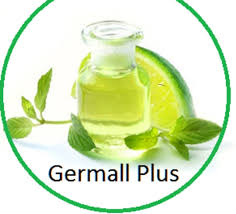
Understanding Germall Plus:
Germall Plus is like a powerful team-up of two germ-fighting agents: diazolidinyl urea and iodopropynyl butylcarbamate (IPBC). This special combo gives strong protection against all sorts of germs, stopping bacteria, yeast, and mold from growing in skincare products. When these two ingredients work together, they make Germall Plus super effective at keeping products like No Youchie Pain Cream safe and germ-free. This is especially important for products with water, where germs can cause big problems.
Diazolidinyl urea is a big part of Germall Plus. It acts as a germ fighter by releasing a tiny bit of formaldehyde when it’s mixed with water. This stops bacteria, yeast, and mold from growing, especially in products like creams and lotions that have water in them. Diazolidinyl urea is great because it stays stable and works well with other ingredients in skincare products. It’s a top pick for companies looking to keep their products safe and clean.
IPBC is another important part of Germall Plus. It works together with diazolidinyl urea to make the preservative even better at fighting germs. IPBC is really good at killing different kinds of germs like bacteria, yeast, and mold. It does this by messing up their cell membranes and how they work, stopping them from growing in skincare products. Since IPBC dissolves in water, it’s perfect for products like No Youchie Pain Cream that have water in them. It helps keep the product safe and stable for a long time on the shelf.
Functions of Germall Plus in No Youchie Pain Cream:
Germall Plus is super important for keeping No Youchie Pain Cream safe and top-notch. It works like a shield, protecting the cream from bad germs like bacteria and fungi. By keeping these germs away, Germall Plus makes sure the cream is safe to use. This lowers the chance of infections or other problems that could happen if the cream gets contaminated. This is especially crucial because pain creams, like No Youchie, go right on your skin, which makes it easier for germs to get in and cause trouble.
Germall Plus does more than just keep the cream safe. It also helps the cream stay effective and last longer. By stopping bad germs from getting in, Germall Plus makes sure that the good stuff in the cream stays strong and works well. So, when you use No Youchie Pain Cream, you know it will do its job and help with your aches and pains. Plus, Germall Plus makes the cream last longer, so you don’t have to throw it away too soon. This means less waste and more value for you as a consumer.
Germall Plus also helps keep the cream steady over time, so it doesn’t change. This means that each batch of No Youchie Pain Cream will work the same way every time you use it, without losing its effectiveness. Consistency is super important in skincare products because people count on them to work the same every time. With Germall Plus, the cream won’t change in texture, smell, or how well it works, so you can always rely on No Youchie Pain Cream to help ease your pain whenever you need it
Benefits of Germall Plus in No Youchie Pain Cream:
- Keeps You Safe: Germall Plus makes sure that No Youchie Pain Cream stays free from harmful germs, keeping you safe from any bad reactions or infections when you use it..
- Lasts Longer: Germall Plus stops germs from growing in No Youchie Pain Cream, making it last longer on the shelf. This means you can use the cream for a longer time without it going bad.
- Works Well with Others: Germall Plus gets along with lots of different skincare ingredients, like oils, soaps, and active ingredients. It fits right in with the cream’s recipe without making it less effective or stable.
- Fights All the Germs: Germall Plus fights against many types of germs, including bacteria, yeast, and mold. This helps keep No Youchie Pain Cream safe and clean for as long as you use it.
- Meets the Rules: Germall Plus follows all the rules and guidelines set by the government and the skincare industry. This means you can trust that No Youchie Pain Cream is made safely and meets all the important standards.

Safety Considerations:
Using Germall Plus in skincare products means following strict rules and safety standards set by the government and the skincare industry. While Germall Plus is generally considered safe for cosmetics, manufacturers must carefully assess the right amount to use to keep products free from germs without causing any adverse reactions like allergies or irritation. This delicate balance requires thorough testing and adherence to regulations to ensure the highest standards of consumer safety and product integrity. By prioritizing safety evaluations and regulatory compliance, cosmetic companies can provide consumers with skincare products that are effective, reliable, and safe to use.
Cosmetic makers need to do more than just figure out how much Germall Plus to use. They also have to follow strict rules and procedures during the making of skincare stuff to keep it safe. Good Manufacturing Practices (GMP) are super important here. They involve things like keeping things clean, measuring ingredients just right, and following set steps to avoid any germs getting in. By sticking to GMP rules, makers can lower the chances of problems and make sure their skincare products are safe and work well.
It’s really important for cosmetic companies to keep an eye on how safe and effective their products are, especially when they contain Germall Plus. They should test things like how long the product lasts and if any germs grow in it when stored differently. After the product is out on the market, companies need to listen to what customers say and watch out for any bad reactions people might have. If there are any issues, they can make changes to the product or how it’s made to fix them quickly. By making sure their products are safe and keeping an eye on things, companies can show customers they care about their safety and happiness.
Role of Germall Plus in Enhancing the Quality of No Youchie Pain Cream:
Germall Plus is a super important ingredient in No Youchie Pain Cream. It’s like a shield that keeps the cream safe from germs that could make it go bad. This is really crucial because if any germs get into the cream, it could cause problems when you put it on your skin. With Germall Plus in the mix, No Youchie Pain Cream promises to be safe and dependable, giving people relief from pain without worrying about any nasty stuff getting in the way.
Germall Plus plays a big role in making sure No Youchie Pain Cream stays top-notch. It stops bacteria, yeast, and mold from growing in the cream, which keeps it fresh and stable for a long time. This means every time you use it, you can expect the same great results. By using Germall Plus, No Youchie Pain Cream shows it’s serious about giving customers high-quality skincare that they can rely on.
Basically, Germall Plus is a big deal in No Youchie Pain Cream. It’s not just about keeping the cream safe; it’s a symbol of the brand’s promise to make sure their product works well and makes customers happy. By using Germall Plus, No Youchie isn’t just delivering pain relief; they’re also making sure their cream meets high standards for cleanliness and quality. As people care more about products being safe and effective, Germall Plus shows that No Youchie is serious about giving customers reliable solutions for their everyday pains.
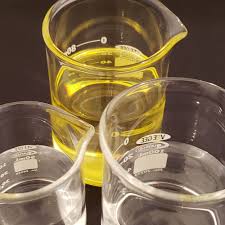
Conclusion:
In today’s beauty world, people want skincare products that not only work but also keep them safe. They’re paying more attention to what’s in the products and how they’re made. This is where preservatives like Germall Plus come in handy. They’re like the guardians of No Youchie Pain Cream, making sure it stays good for a long time and doesn’t get contaminated by harmful germs. This is super important, especially for skincare stuff that goes directly on your skin, where bacteria can cause problems. So, by using Germall Plus in No Youchie Pain Cream, the brand shows that they’re serious about making products that are both safe and effective for customers.
Moreover, as the skincare world changes, companies making cosmetics need to keep up with what people want and what the rules say to make sure they’re giving customers what they need. Germall Plus is a big help here because it’s been shown to be safe and work well, giving brands like No Youchie the confidence to deal with these challenges. By knowing how Germall Plus helps keep products safe, companies can make formulas that not only work but also follow strict safety rules. This not only makes customers trust the product more but also keeps the company following the law, showing that they’re really good at what they do and can be relied on.
To sum up, Germall Plus is not just any preservative in No Youchie Pain Cream; it shows a dedication to making skincare better and more innovative. By using Germall Plus, No Youchie gives a safe, powerful, and dependable way to relieve pain, perfect for people who want their skincare to work well and be safe. As shoppers ask for brands to be more open and responsible, Germall Plus becomes a sign of trust and quality, proving how much No Youchie cares about giving customers top-notch products that make them feel good and worry less.
Please Visit me on KickStarter!
You can Also visit me at IndieGoGo!
[Disclaimer: Consult a healthcare professional before starting any new pain soothing regimen. “No Youchie” is not intended to diagnose, treat, cure, or prevent any disease illness or injury.]

